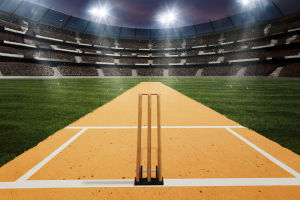Have you ever looked at a peaceful golf course and thought, "What’s so exciting about hitting a tiny ball into a hole?" Well, today we’re diving into the story behind this elegant sport.
From its rich history to the secrets behind each swing, we’ll explore why golf has captured so many hearts around the world. Stick with us — by the end, we might all be itching to try a shot ourselves!
How Did Golf Begin?
Golf’s story starts way back in 1456 in Scotland. It was in these breezy coastal lands that people first started swinging clubs to send little balls across rough grassy fields. Fun fact: the standard 18-hole format we see today was also set up in Scotland! Over the centuries, the game evolved and spread across the world. The world's oldest golf club is still found there, and golf is even considered a symbol of Scottish pride.
Big Moments in Golf History
One of the coolest stories? Astronaut Alan Shepard played golf on the Moon during the Apollo 14 mission! Although his first shot missed, the second shot, thanks to the Moon’s low gravity, traveled an incredible two miles — the farthest golf shot ever (though unofficially, of course). It shows just how universal the love for golf can be, even beyond Earth.
What's a Golf Course Really Like?
When we think of golf, lush green landscapes come to mind. A standard golf course has 18 holes, though smaller 9-hole courses are also common. Each hole comes with a tee box to start, fairways, roughs (areas with taller grass), bunkers filled with sand, water hazards, and a neatly maintained green with a hole marked by a flag.
Some holes are straightforward, while others curve left or right — called “doglegs.” In some tricky designs, the ball has to navigate two bends, known as "double doglegs." Obstacles like ponds or white stakes marking out-of-bounds areas add extra challenges, making every course unique and exciting!
Understanding the Shots and Clubs
In competitions, players are allowed to carry up to 14 clubs. Typically, a set includes a driver for long shots, a few fairway woods, nine irons, a putter for the green, and maybe a special club for tricky shots. Different holes are categorized by length: over 431 meters is usually a 5-shot hole (par 5), 229 to 431 meters is a 4-shot hole (par 4), and anything shorter is a 3-shot hole (par 3). Most professional golf tournaments consist of four rounds for men and three for women.
The Magic of the Putting Green
The putting green — the final area near the hole — needs the most precision. It’s all about smooth grass and careful maintenance. If the grass is short and even, we call it a "fast" green because the ball rolls quickly. A "slow" green requires stronger strokes to move the ball the same distance. The green’s surface usually has slight slopes, making putting a true test of skill and patience.
To measure green speed, special tools help calculate how easily a ball rolls over the grass, considering even tiny inclines or declines. Every course's green is a little different, adding more thrill to each round.
How Scores Work
Scoring in golf is centered around the “par” — the expected number of strokes a skilled player needs to complete a hole. For example, on a par-4 hole, a good player aims to reach the green in two shots and then sink the ball with two putts. If we manage to reach the green in the expected number of shots, that’s called a Green in Regulation (GIR), which is a major goal for golfers. Keeping close to par is the key to a good game!
Ready to Swing into Action?
So Lykkers, after walking through this vibrant world of golf with us, don't you feel a bit tempted to try? Golf isn't just about hitting a ball — it’s about patience, strategy, and enjoying beautiful outdoor spaces. Whether we are beginners or seasoned players, there's always something new to learn and enjoy in every swing. Maybe it’s time we grabbed a club and headed for the green — what do you think? Let’s chase that next perfect shot together!
Possibly The Best Golf Tip I've Ever Seen - It's So Simple!
Video by Danny Maude


